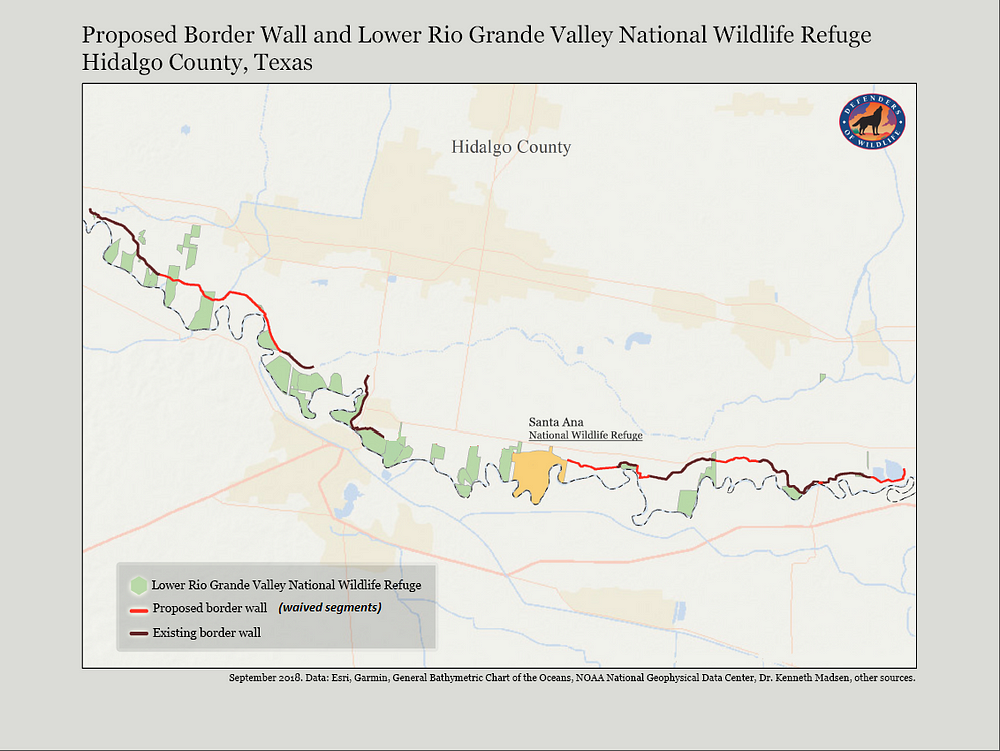The Trump administration has no shame — or respect for the law — when it comes to our border.
After waiving public health, safety, and religious protections, and a slate of environmental laws in California and New Mexico to build new border wall, the administration is now targeting southeastern Texas. The Department of Homeland Security recently announced that it will waive 28 federal statutes in the Rio Grande Valley in an effort to accelerate construction of new wall segments along our southern border.

The administration’s latest order to sweep aside our country’s most fundamental conservation and wildlife protections, including the Endangered Species Act, National Environmental Policy Act, National Wildlife Refuge Administration Act and Migratory Bird Treaty Act, would force wall construction through essential wildlife habitat in Hidalgo and Cameron counties. Waiving these laws will prevent robust, science-based analysis of the environmental impacts of wall construction on imperiled species and public lands, and bar the public from providing input on construction proposals — including people living on the border whose lives would be directly affected.
More than 24 miles of new wall are proposed for the Rio Grande Valley, including segments that will effectively sever and wall off parcels of Lower Rio Grande Valley National Wildlife Refuge, as well as Bentsen Rio Grande Valley State Park, the National Butterfly Center, and the La Lomita Chapel in Mission, Texas. The impermeable barrier would also slice through family farms and other private properties.

The newly waived wall segments would irreparably damage the national wildlife refuge, effectively sealing off vital habitat from the United States and fragmenting the wildlife corridor along the river. Not only would this reckless proposal bisect, degrade and destroy important habitat, but it would block wildlife migration routes, prevent genetic exchange between species populations, and exacerbate flooding, trapping animals behind the wall to drown or starve during flood events.
Known as the “wildlife corridor,” Lower Rio Grande Valley National Wildlife Refuge conserves a crucial east-west corridor along 275 river miles from the Gulf of Mexico into the interior, sustaining world class biodiversity in the region. The refuge is comprised of more than 100 parcels of public lands connecting otherwise isolated state parks, private conservation properties, federal lands and other land ownerships. Located at an ecological crossroads where subtropical, temperate, coastal and desert systems converge, and at the confluence of the Mississippi and Central flyways, the refuge supports more than 500 bird species, 300 butterfly species, 775 plant species and provides habitat for at least 15 species protected under the Endangered Species Act, including the highly imperiled ocelot and jaguarundi.


Over nearly 40 years, taxpayers have spent more than $75 million to acquire habitat for Lower Rio Grande Valley Refuge, and millions more to support regional habitat connectivity. Border wall construction through this corridor will waste that investment and threaten the ecotourism and recreation revenue streams that flow through the region thanks to its biodiversity.
Defenders has combined forces with the Center for Biological Diversity and the Animal Legal Defense Fund to challenge these waivers in court. Please join us in protecting our borderlands and the wildlife that depend on them by submitting your comment to U.S. Customs and Border Protection opposing this needless, wasteful, illegal and damaging border wall.







